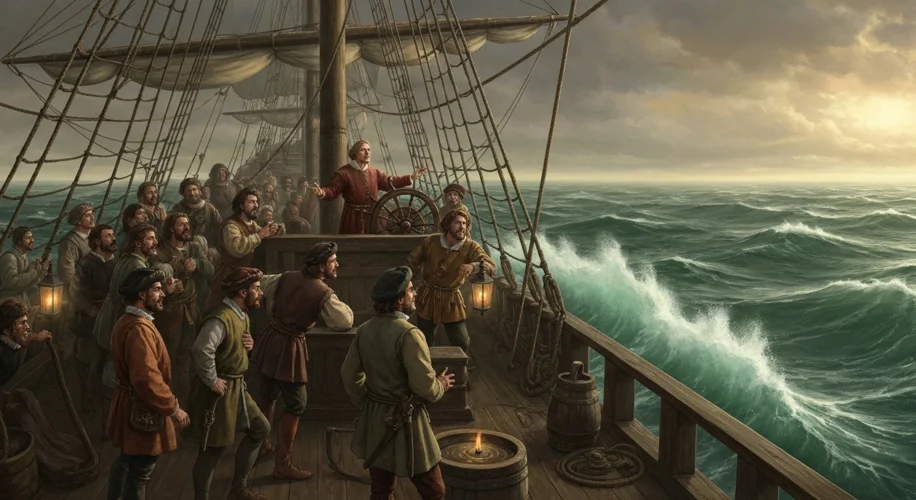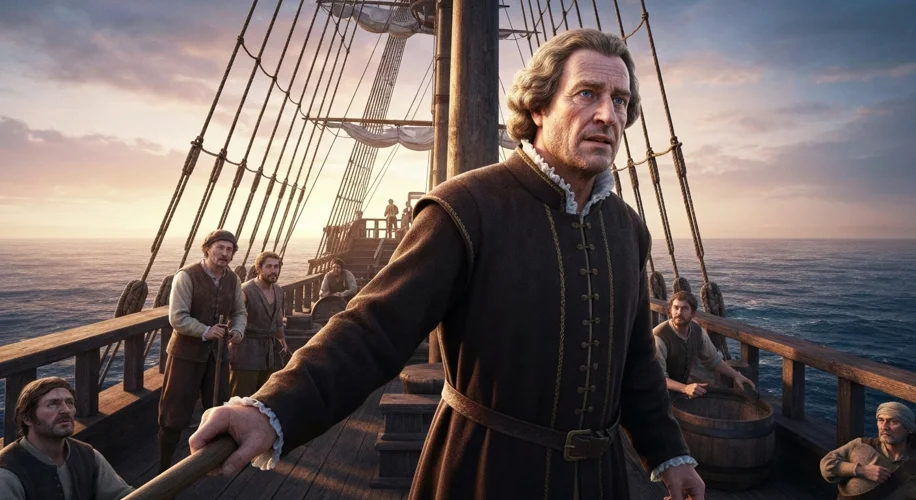The year is 1492. The air in Palos de la Frontera, Spain, crackles with anticipation, a heady mix of salt spray and unspoken ambition. Three small ships – the Niña, the Pinta, and the Santa María – bob precariously in the harbor, their sails furled like sleeping wings. Aboard them, a Genoese navigator named Christopher Columbus, his heart a tempest of faith and yearning, prepares to set sail into the vast, unknown expanse of the Atlantic Ocean. His mission: to find a westward sea route to the riches of the East, a shortcut to the fabled spice lands of Asia.
Columbus was not the first to dream of sailing west, nor was his quest entirely his own. For decades, European powers had been locked in a fierce competition for trade routes to Asia, dominated by land routes controlled by intermediaries and the perilous journey around Africa. The allure of spices – pepper, cinnamon, nutmeg – was immense; they were not mere flavorings but currency, preservatives, and medicines. Portugal had made significant strides in circumnavigating Africa, but Columbus, fueled by a potent blend of Renaissance curiosity and fervent religious zeal, believed a more direct path lay across the Atlantic.
His journey, however, was not a simple matter of charting a course. It was a gamble born of desperation. After years of petitioning monarchs, facing rejection and skepticism, he finally secured the backing of Isabella I of Castile and Ferdinand II of Aragon. This backing was crucial, not just for the ships and crew, but for the underlying motivations. Columbus envisioned not just trade, but the expansion of Christendom, the conversion of new souls to Catholicism, and the acquisition of wealth to fund further crusades. His vision was a complex tapestry woven from economic opportunity, religious fervor, and a thirst for personal glory.

On August 3, 1492, the small fleet departed. Weeks turned into months. The vastness of the ocean began to weigh on the sailors. Whispers of mutiny grew louder as the coastline of Europe faded into a distant memory. Columbus, meticulously keeping two logs – one true, one falsified to placate his anxious crew – pressed onward, his conviction a solitary beacon against the rising tide of doubt. He spoke of favorable winds and divine guidance, but even his extraordinary resolve must have been tested by the endless horizon.
Then, on October 12, 1492, a cry pierced the pre-dawn stillness: “¡Tierra! ¡Tierra!” (Land! Land!). They had arrived. Not at the bustling ports of Cipangu (Japan) or Cathay (China), as Columbus believed, but on an island in the Bahamas, which he christened San Salvador. The inhabitants, the Taíno people, greeted them with a mixture of curiosity and apprehension. Columbus, mistaking them for the peoples of the Indies, called them “Indians.”
His subsequent voyages – three more in total – would lead him to explore further islands in the Caribbean and along the coast of what is now Venezuela. He encountered diverse peoples, exchanged trinkets for gold, and collected samples of flora and fauna. Yet, his interactions were often marked by a profound misunderstanding and a brutal assertion of European dominance. The Taíno, initially welcoming, soon experienced the harsh realities of Columbus’s arrival: forced labor, enslavement, and the introduction of diseases to which they had no immunity.
Columbus’s voyages were undeniably groundbreaking. He connected two worlds that had been isolated for millennia, initiating the Columbian Exchange – a vast transfer of plants, animals, culture, human populations, technology, diseases, and ideas between the Americas, West Africa, and the Old World. Potatoes, tomatoes, and corn flowed to Europe, while wheat, sugar, and horses crossed the Atlantic. But this exchange came at a devastating cost to the indigenous populations of the Americas, who suffered catastrophic population declines due to disease and violence.
Columbus’s legacy is complex and deeply contested. While celebrated for centuries as a heroic explorer who “discovered” America, modern scholarship increasingly recognizes the immense human tragedy that accompanied his arrival. His voyages marked the beginning of European colonization, the transatlantic slave trade, and the profound reshaping of global power dynamics. The encounter between these two worlds, initiated by Columbus’s daring westward voyage, irrevocably altered the course of human history, leaving a legacy that continues to be debated and understood in new ways today.

